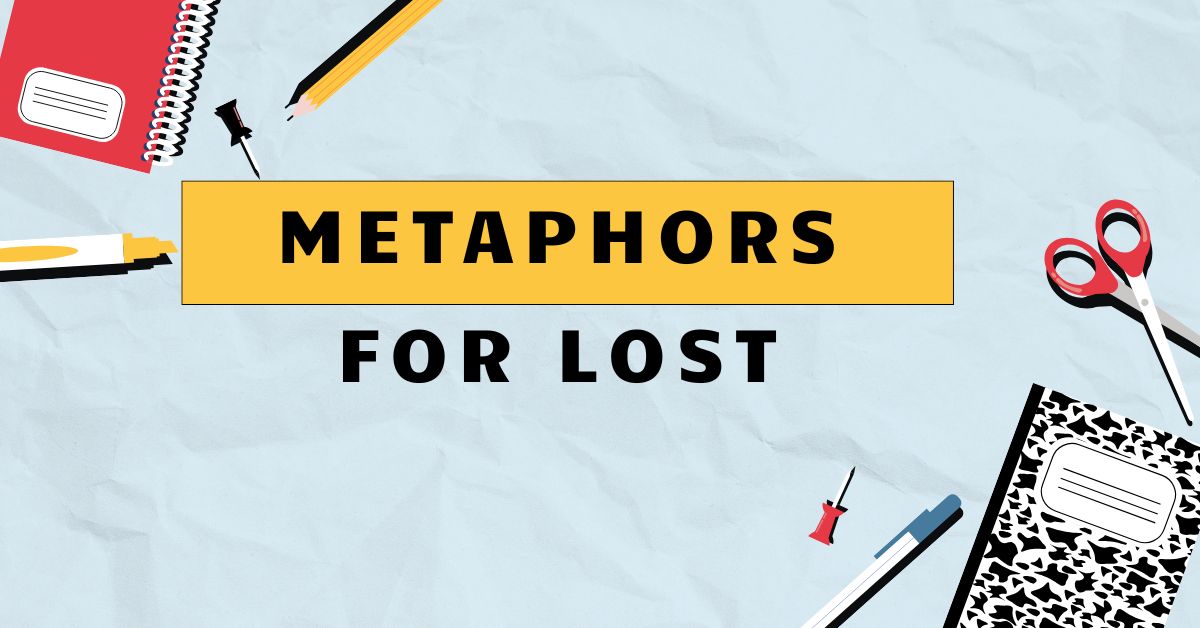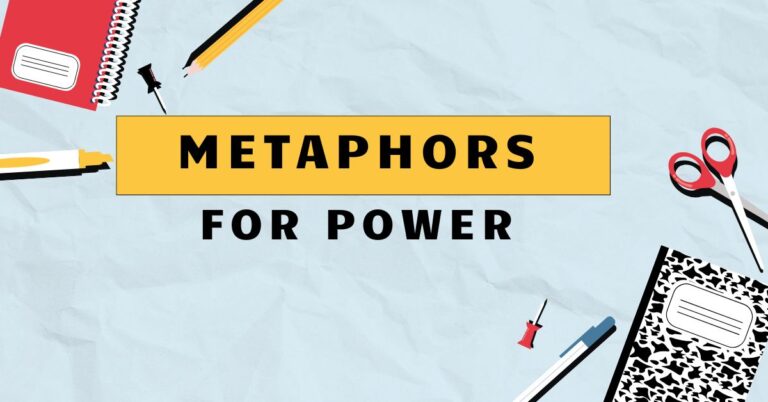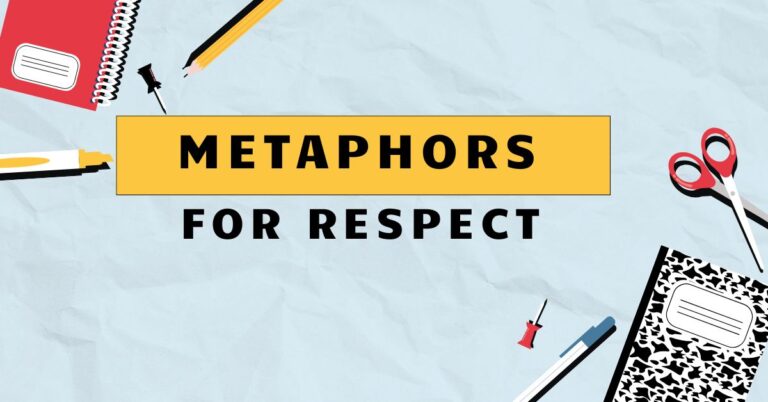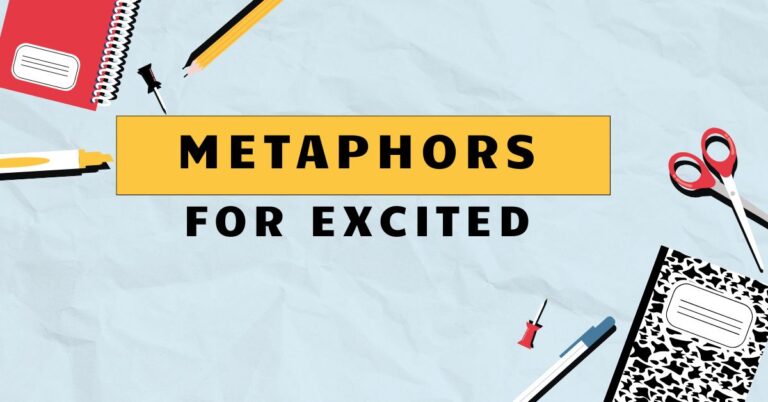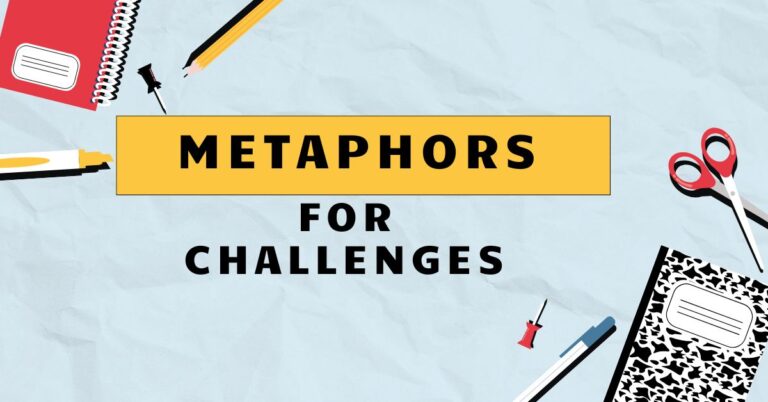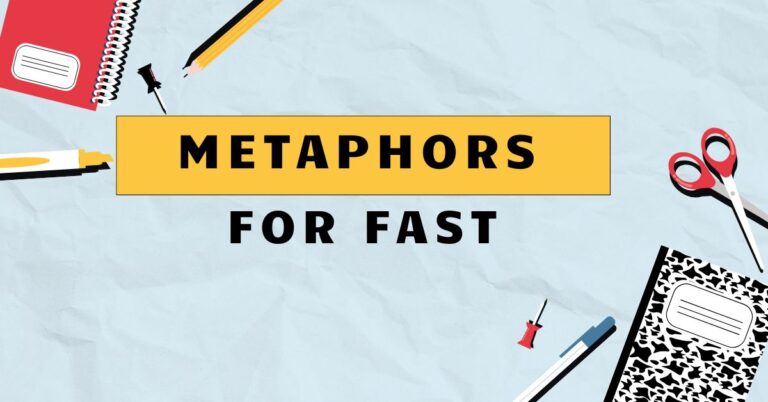29 Metaphors for Lost: Exploring Figurative Language
Understanding metaphors for “lost” is crucial for grasping the nuances of English. Metaphors allow us to express complex emotions and abstract concepts in relatable terms.
This article delves into the world of metaphors used to describe the feeling of being lost, both literally and figuratively. This guide is especially helpful for English language learners, writers, and anyone interested in enriching their understanding and use of figurative language.
By the end, you’ll be able to identify, interpret, and effectively use metaphors for “lost” in your own speech and writing.
This article will cover everything from the basic definition of a metaphor to advanced techniques for using them effectively. We’ll explore different categories of metaphors for “lost,” examine common mistakes, and provide practice exercises to solidify your understanding.
The goal is to equip you with the knowledge and skills to appreciate the richness and depth that metaphors bring to the English language.
Table of Contents
- Introduction
- Definition of Metaphor and Its Application to ‘Lost’
- Structural Breakdown of Metaphors for ‘Lost’
- Types of Metaphors for ‘Lost’
- Examples of Metaphors for ‘Lost’
- Usage Rules for Metaphors
- Common Mistakes When Using Metaphors for ‘Lost’
- Practice Exercises
- Advanced Topics in Metaphorical Usage
- Frequently Asked Questions
- Conclusion
Definition of Metaphor and Its Application to ‘Lost’
A metaphor is a figure of speech that directly compares two unrelated things, asserting that one thing *is* another, not literally, but for rhetorical effect. It’s a way of understanding and experiencing one kind of thing in terms of another.
Unlike similes, which use “like” or “as” to make a comparison, metaphors imply a direct equivalence. The power of a metaphor lies in its ability to create vivid imagery and evoke deeper meaning.
When applied to the concept of “lost,” metaphors help us express the feeling of being disoriented, confused, or without direction, both physically and emotionally. For example, saying “I’m drowning in paperwork” is a metaphor for feeling overwhelmed, even though you’re not literally drowning.
Similarly, “He’s lost in a sea of despair” uses the image of a vast, uncontrollable ocean to convey intense sadness and hopelessness. Metaphors allow us to communicate the abstract feeling of being lost in a more concrete and relatable way.
The concept of being “lost” extends beyond physical location. We can be lost in thought, lost in a relationship, lost in our careers, or lost in life itself.
Metaphors provide a rich tapestry of language to express these varied experiences. By understanding the different types of metaphors used to describe “lost,” we can gain a deeper understanding of the human condition and the complexities of navigating life’s challenges.
Structural Breakdown of Metaphors for ‘Lost’
Metaphors consist of two main elements: the **tenor** and the **vehicle**. The tenor is the subject to which metaphorical attributes are ascribed (in this case, “lost”).
The vehicle is the object or concept whose attributes are borrowed to illuminate the tenor. In the metaphor “He’s lost in a sea of despair,” the tenor is “he” (the person who is lost), and the vehicle is “a sea of despair.”
The **ground** is the shared characteristic or similarity between the tenor and the vehicle. In the example above, the ground is the feeling of being overwhelmed, helpless, and without direction.
The sea represents a vast, uncontrollable force, mirroring the overwhelming nature of despair.
Understanding these structural elements allows us to deconstruct and analyze metaphors, revealing their underlying meaning and impact. By identifying the tenor, vehicle, and ground, we can appreciate the ingenuity and effectiveness of metaphorical language.
Metaphors can also be analyzed in terms of their **source domain** (the concept used to understand another) and **target domain** (the concept being understood). In our example, the source domain is the sea, and the target domain is despair.
Types of Metaphors for ‘Lost’
Metaphors for “lost” can be categorized in several ways, depending on the specific aspect of the experience being emphasized. Here, we’ll explore four main categories: spatial metaphors, emotional metaphors, navigational metaphors, and abstract metaphors.
Spatial Metaphors
Spatial metaphors use physical space and location to describe the feeling of being lost. These metaphors often involve imagery of being in a maze, a dark forest, or a vast, empty landscape.
They emphasize the sense of disorientation and the lack of clear direction.
Emotional Metaphors
Emotional metaphors connect the feeling of being lost with specific emotions, such as sadness, fear, or confusion. These metaphors often involve imagery of being overwhelmed by emotions, drowning in sorrow, or trapped in a cycle of despair.
They highlight the emotional toll of feeling lost.
Navigational Metaphors
Navigational metaphors use the language of travel and direction to describe the experience of being lost. These metaphors often involve imagery of being without a map, a compass, or a guide.
They emphasize the lack of clear purpose and the uncertainty of the future.
Abstract Metaphors
Abstract metaphors use more conceptual or philosophical ideas to describe the feeling of being lost. These metaphors often involve imagery of being disconnected from oneself, lacking a sense of identity, or feeling adrift in the universe.
They explore the deeper, existential aspects of being lost.
Examples of Metaphors for ‘Lost’
To further illustrate the different types of metaphors for “lost,” let’s examine a variety of examples, categorized by the types discussed above. These examples will showcase the diverse ways in which metaphors can be used to express the feeling of being lost in various contexts.
Spatial Metaphor Examples
Spatial metaphors use physical locations and spatial relationships to convey the feeling of being lost. They rely on our understanding of physical space to represent abstract concepts.
The following table provides several examples.
| Metaphor | Explanation |
|---|---|
| He was lost in a labyrinth of bureaucracy. | The bureaucracy is portrayed as a complex, confusing maze. |
| She felt lost in the urban jungle. | The city is depicted as a wild, overwhelming environment. |
| The project was lost in the shuffle. | The project disappeared within disorganized processes. |
| I’m lost in a sea of faces. | The crowd is vast and indistinguishable, making the speaker feel anonymous and disoriented. |
| He’s wandering in the wilderness of his mind. | His thoughts are chaotic and unexplored. |
| They were lost in the depths of the forest. | The forest is a vast and dangerous place, symbolizing feeling overwhelmed and alone. |
| The document got lost in the system. | The system is presented as a place where things disappear. |
| She felt lost in the crowd. | Feeling anonymous and insignificant within a large group. |
| He was lost in the corridors of power. | The power structure is complex and difficult to navigate. |
| My keys are lost in the abyss of my purse. | The purse is a deep, dark place where things disappear. |
| The ship was lost in the fog. | The fog represents confusion and lack of visibility. |
| He’s lost in the backwaters of the company. | He’s stuck in a stagnant and unimportant part of the organization. |
| She feels lost in this small town. | Feeling out of place and disconnected from the community. |
| The data is lost in the cloud. | The data is stored in a remote and inaccessible location. |
| He was lost in the desert of his own making. | He created his own isolation and barrenness. |
| The solution got lost in the details. | The details obscured the clear path to the solution. |
| She feels lost on this vast campus. | The campus is large and overwhelming, making her feel small and insignificant. |
| The original idea was lost in translation. | The translation process distorted and obscured the original meaning. |
| He’s lost in the maze of his own creation. | He created his own complex and confusing situation. |
| The file is lost somewhere on the server. | The server is a vast and disorganized repository of information. |
| They were lost in the shadows of the past. | The past is a dark and overwhelming presence. |
| She feels lost in the sprawl of Los Angeles. | The city is vast and overwhelming, making her feel disconnected and insignificant. |
| The truth is lost in the noise. | The noise represents confusion and misinformation. |
| He’s lost in the sprawl of his responsibilities. | He has too many responsibilities, making him feel overwhelmed and directionless. |
| The opportunity was lost in the crowd of other opportunities. | Many opportunities existed, obscuring the chosen one. |
Emotional Metaphor Examples
Emotional metaphors use feelings and emotional states to describe the experience of being lost. They help us connect with the emotional impact of feeling lost and understand its psychological effects.
These metaphors use intense feelings like sadness, fear, and despair to represent the state of being lost. Review the table below for examples.
| Metaphor | Explanation |
|---|---|
| She was lost in a sea of despair. | Her despair is overwhelming and all-encompassing. |
| He’s drowning in sorrow. | His sorrow is so intense that it feels like he’s suffocating. |
| They are lost in their grief. | Their grief is consuming and prevents them from moving forward. |
| I’m lost in a fog of confusion. | The confusion is thick and disorienting. |
| He’s wandering in a desert of loneliness. | His loneliness is vast and barren. |
| She felt lost in the darkness of her depression. | Her depression is a dark and oppressive force. |
| They were lost in the labyrinth of their emotions. | Their emotions are complex and confusing. |
| He’s lost in a whirlwind of anxiety. | His anxiety is chaotic and overwhelming. |
| She felt lost in the silence. | The silence is oppressive and isolating. |
| They are lost in the shadows of their fears. | Their fears are a dark and overwhelming presence. |
| He’s lost in the depths of his anger. | His anger is intense and consuming. |
| She felt lost in the echo of her regrets. | Her regrets are a constant and haunting reminder of the past. |
| They are lost in the maze of their memories. | Their memories are complex and confusing. |
| He’s lost in the wilderness of his doubts. | His doubts are vast and unexplored. |
| She felt lost in the storm of her emotions. | Her emotions are chaotic and overwhelming. |
| They are lost in the quicksand of their problems. | Their problems are difficult to escape. |
| He’s lost in the abyss of his despair. | His despair is deep and all-consuming. |
| She felt lost in the undertow of her sadness. | Her sadness is pulling her down and preventing her from moving forward. |
| They are lost in the void of their emptiness. | Their emptiness is profound and isolating. |
| He’s lost in the labyrinth of his thoughts. | His thoughts are complex and confusing. |
| She felt lost in the fog of her grief. | Her grief is thick and disorienting. |
| They are lost in the shadows of their past. | Their past is a dark and overwhelming presence. |
| He’s lost in the quicksand of his worries. | His worries are difficult to escape. |
| She felt lost in the wilderness of her soul. | Her soul is vast and unexplored. |
| They are lost in the storm of their fears. | Their fears are chaotic and overwhelming. |
Navigational Metaphor Examples
Navigational metaphors use terms related to travel, direction, and guidance to describe the feeling of being lost. They emphasize the lack of a clear path or purpose.
The following table lists many examples.
| Metaphor | Explanation |
|---|---|
| He’s adrift in life. | He lacks direction and purpose. |
| She’s lost her way. | She’s deviated from her intended path. |
| They’ve lost their bearings. | They’re disoriented and unsure of their location. |
| I’m off course. | I’m not following the intended plan. |
| He’s without a compass. | He lacks guidance and direction. |
| She’s sailing without a rudder. | She lacks control over her direction. |
| They’re wandering aimlessly. | They’re moving without a specific goal. |
| He’s lost the map. | He lacks a plan or strategy. |
| She’s at a crossroads. | She’s facing a difficult decision with uncertain outcomes. |
| They’re on the wrong track. | They’re pursuing an incorrect course of action. |
| He’s without a guide. | He lacks mentorship and support. |
| She’s navigating uncharted waters. | She’s facing unfamiliar and uncertain circumstances. |
| They’re lost in the fog of uncertainty. | The uncertainty is obscuring their path. |
| He’s lost the plot. | He’s no longer following the main narrative or purpose. |
| She’s lost her train of thought. | She’s forgotten what she was saying. |
| They’re lost in the details. | They’re focusing on unimportant aspects. |
| He’s lost the thread. | He’s lost the connection or continuity. |
| She’s lost in translation. | The message has been misinterpreted. |
| They’re lost in the shuffle. | They’ve been overlooked or forgotten. |
| He’s lost his way home. | He has lost his sense of belonging or purpose. |
| She’s lost her sense of direction. | She feels insecure about her goals. |
| They’re lost in the labyrinth of bureaucracy. | The bureaucracy is complex and difficult to navigate. |
| He’s lost in the corridors of power. | He lacks access to influential people. |
| She’s lost in the backwaters of the company. | She’s stuck in an unimportant and stagnant part of the company. |
| They’re lost in the desert of their careers. | Their careers are barren and unfulfilling. |
Abstract Metaphor Examples
Abstract metaphors use conceptual ideas to describe the feeling of being lost. They explore deeper, philosophical aspects of being lost, such as identity, purpose, and connection to the world.
The examples below show some common usages.
| Metaphor | Explanation |
|---|---|
| He’s lost his identity. | He no longer knows who he is. |
| She’s lost her purpose. | She lacks a sense of meaning in life. |
| They’ve lost their connection to reality. | They’re detached from the world around them. |
| I’m lost in thought. | I’m deeply engrossed in my own thoughts. |
| He’s lost in a dream. | He’s living in a fantasy world. |
| She’s lost in the past. | She’s dwelling on past events. |
| They’re lost in the future. | They’re preoccupied with future possibilities. |
| He’s lost his innocence. | He’s no longer naive or pure. |
| She’s lost her faith. | She no longer believes in something. |
| They’re lost in the system. | They’re caught in a complex and impersonal process. |
| He’s lost his way in life. | He has deviated from his intended path. |
| She’s lost her sense of self. | She no longer knows who she is. |
| They’re lost in the crowd. | They feel anonymous and insignificant. |
| He’s lost his voice. | He’s unable to express himself. |
| She’s lost her touch. | She’s lost her ability or skill. |
| They’re lost in translation. | The message has been misinterpreted. |
| He’s lost in the shuffle. | He’s been overlooked or forgotten. |
| She’s lost in the moment. | She’s fully absorbed in the present experience. |
| They’re lost in the music. | They’re completely immersed in the music. |
| He’s lost in the game. | He’s fully focused on the game. |
| She’s lost in her work. | She’s completely dedicated to her work. |
| They’re lost in their books. | They are deeply engrossed in reading. |
| He’s lost in his thoughts. | He is deeply contemplating something. |
| She’s lost in the narrative. | She is completely absorbed by the story. |
| They’re lost in the beauty of nature. | They are captivated by the natural world. |
Usage Rules for Metaphors
Using metaphors effectively requires attention to several key rules. First, ensure the metaphor is appropriate for the context and audience.
A metaphor that is too obscure or complex may confuse the reader rather than enlighten them. Second, avoid mixed metaphors, which combine incongruous images and create a nonsensical effect.
For example, “He nipped it in the bud before it took flight” mixes gardening and aviation imagery, resulting in a confusing statement.
Third, be mindful of overused or cliché metaphors. While these metaphors may be easily understood, they lack originality and impact.
Strive to create fresh and imaginative metaphors that will engage the reader and convey your message in a unique way. Finally, ensure the metaphor is consistent with the overall tone and style of your writing.
A jarring or inappropriate metaphor can disrupt the flow and undermine the effectiveness of your communication.
Consider the cultural context when using metaphors. Some metaphors may be culturally specific and may not be understood by individuals from different backgrounds.
Be sensitive to these cultural differences and choose metaphors that are universally accessible or provide sufficient context for understanding. The most effective metaphors are those that resonate with the reader and create a shared understanding of the concept being expressed.
They should enhance the clarity and impact of your message, rather than detract from it.
Common Mistakes When Using Metaphors for ‘Lost’
One common mistake is using **mixed metaphors**. This happens when you combine two or more metaphors that don’t logically fit together.
For example, saying “He was climbing the ladder of success, but then he hit a brick wall and sailed off course” mixes the metaphors of climbing a ladder, hitting a wall, and sailing a ship, creating a confusing image.
Another mistake is using **cliché metaphors**. These are overused expressions that have lost their impact.
For example, “feeling lost at sea” is a common cliché. While it’s understandable, it lacks originality and doesn’t create a vivid image.
Try to come up with fresh and unique ways to express the feeling of being lost.
A further mistake is using metaphors that are **too abstract or confusing**. The purpose of a metaphor is to clarify and illuminate, not to obscure.
If your metaphor is difficult to understand, it will defeat its purpose. Make sure your metaphor is clear, relevant, and easy to grasp.
Below are some examples of common mistakes when using metaphors.
| Incorrect | Correct | Explanation |
|---|---|---|
| He was lost in a sea of despair, climbing the ladder of hope. | He was lost in a sea of despair, desperately searching for land. | Avoid mixing unrelated metaphors. |
| She felt like a fish out of water. | She felt isolated and out of place in the new environment. | Avoid clichés; use more original expressions. |
| He was a quantum entanglement of lostness. | He was deeply disconnected and without direction. | Ensure the metaphor is understandable and relevant. |
Practice Exercises
Test your understanding of metaphors for “lost” with these exercises. Identify the type of metaphor used in each sentence and explain its meaning.
Then, create your own metaphors for “lost” in different contexts.
| Question | Type of Metaphor | Explanation |
|---|---|---|
| 1. She felt adrift in a sea of uncertainty. | Navigational/Emotional | She lacks direction and is overwhelmed by uncertainty. |
| 2. He was lost in the labyrinth of his own mind. | Spatial/Abstract | His thoughts are complex and confusing. |
| 3. They were lost in the shadows of their past. | Spatial/Emotional | Their past is a dark and overwhelming presence. |
| 4. I’m lost in a fog of confusion. | Spatial/Emotional | The confusion is thick and disorienting. |
| 5. He’s wandering in a desert of loneliness. | Spatial/Emotional | His loneliness is vast and barren. |
| 6. She felt lost in the darkness of her depression. | Spatial/Emotional | Her depression is a dark and oppressive force. |
| 7. They are lost in the corridors of power. | Spatial/Abstract | They are unable to navigate the power structure. |
| 8. He’s lost the map to his own happiness. | Navigational/Emotional | He lacks a plan to achieve happiness. |
| 9. She’s lost her way in life. | Navigational/Abstract | She has deviated from her intended path. |
| 10. They’re lost in a whirlwind of emotions. | Spatial/Emotional | Their emotions are chaotic and overwhelming. |
Exercise 2: Create Your Own Metaphors
Create a metaphor for “lost” in each of the following contexts:
- Lost in a new city.
- Lost in a complicated relationship.
- Lost in a difficult career.
- Lost after a major life change.
- Lost while trying to solve a complex problem.
Example Answers:
- Lost in a new city: “He was a small boat tossed about on a vast, unfamiliar ocean.”
- Lost in a complicated relationship: “The relationship was a tangled forest with no clear path.”
- Lost in a difficult career: “Her career felt like a treadmill, endlessly running but going nowhere.”
- Lost after a major life change: “He felt like a blank page, unsure of what to write next.”
- Lost while trying to solve a complex problem: “The problem was a Gordian knot, impossible to untangle.”
Advanced Topics in Metaphorical Usage
For advanced learners, exploring the concept of **extended metaphors** can be particularly rewarding. An extended metaphor is a metaphor that is developed over several lines or even throughout an entire work.
It allows for a more nuanced and complex exploration of the relationship between the tenor and the vehicle. For instance, an entire poem could use the metaphor of a ship lost at sea to represent a person’s struggle with depression.
Another advanced topic is the use of **dead metaphors**. These are metaphors that have become so common that they are no longer recognized as metaphors.
For example, the phrase “the heart of the matter” was originally a metaphor, but it is now used so frequently that it is considered a literal expression. Understanding how metaphors can evolve over time can provide valuable insight into the dynamic nature of language.
Finally, studying the **cognitive theory of metaphor** can deepen your understanding of how metaphors shape our thinking and perception. This theory suggests that metaphors are not merely decorative figures of speech, but fundamental tools for understanding abstract concepts.
By exploring these advanced topics, you can gain a more sophisticated appreciation of the power and complexity of metaphorical language.
Frequently Asked Questions
- What is the difference between a metaphor and a simile?
A metaphor directly equates two things (e.g., “He is a lion”), while a simile uses “like” or “as” to compare them (e.g., “He is like a lion”). Metaphors are more forceful and assertive, while similes are more tentative and suggestive.
- How can I avoid using cliché metaphors?
Read widely, pay attention to the language around you, and challenge yourself to come up with fresh and original ways to express your ideas. Think about the specific qualities you want to convey and brainstorm images that capture those qualities in a unique way.
- What should I do if I accidentally use a mixed metaphor?
Revise your sentence to create a more coherent and consistent image. Identify the conflicting elements and choose a single metaphor that effectively conveys your intended meaning.
- How can I tell if a metaphor is too abstract?
Ask yourself if the metaphor is clear and understandable. If you have to explain the metaphor at length, it may be too abstract. Try to choose a metaphor that is more concrete and relatable.
- Can a metaphor be a symbol?
Yes, a metaphor can also function as a symbol if it represents something beyond its literal meaning. For example, a dove can be a metaphor for peace, but it can also be a symbol of peace.
- Why are metaphors important in writing?
Metaphors add depth, imagery, and emotional resonance to writing. They help readers connect with the text on a deeper level and understand complex ideas in a more intuitive way. They also make writing more engaging and memorable.
- How do I identify the tenor and vehicle in a metaphor?
The tenor is the subject being described, and the vehicle is the object or concept used to describe it. Ask yourself, “What is being compared to what?” The answer will reveal the tenor and vehicle.
- Are metaphors used in everyday speech?
Yes, metaphors are ubiquitous in everyday speech. We often use metaphorical language without even realizing it. For example, saying “I’m feeling blue” is a metaphorical expression for feeling sad.
- How can I practice using metaphors effectively?
Start by identifying metaphors in the writing and speech of others. Then, try to create your own metaphors in different contexts. Experiment with different images and see what works best. Write regularly to improve your skills.
- What is the role of context in understanding metaphors?
Context is crucial for understanding metaphors. The meaning of a metaphor can vary depending on the context in which it is used. Pay attention to the surrounding words, phrases, and ideas to fully grasp the intended meaning.
Conclusion
Mastering the art of using metaphors for “lost” enhances your ability to communicate complex emotions and abstract ideas with clarity and impact. By understanding the structure, types, and usage rules of metaphors, you can enrich your writing and speech, making it more engaging and memorable.
Avoid common mistakes like mixed metaphors and clichés, and strive to create fresh and original expressions that resonate with your audience.
Practice is key to developing your metaphorical skills. Experiment with different images, explore advanced topics like extended metaphors, and pay attention to the language around you.
With consistent effort, you can unlock the power of metaphors and elevate your communication to a new level. Remember that metaphors are not just decorative; they are fundamental tools for understanding and expressing the human experience.
Continue to explore the rich landscape of figurative language, and you’ll find that your ability to express yourself with creativity and precision will grow exponentially. Embrace the challenge, and enjoy the journey of mastering the art of metaphors.
The world of language is vast and full of possibilities, waiting to be discovered.

